The Best Emergency Supply Checklist
Being prepared for almost any emergency that comes your way can be a real challenge. In my posts over the years, I’ve always stressed the need to acquire, store, and know how to use those critical items that will ensure your safety and comfort when an unexpected emergency happens to you and your family. I’ve put together the best emergency supply checklist so you can get started on your own preparedness journey.
A reliable checklist should include those preparedness items that will really make a difference when an emergency happens. That being said, the checklist could prove to be intimidating if you are just getting started, and it could also be so long that you wonder where to start.
My approach today is to start simple and compile a checklist that will hopefully get you and your family through the first few days when a natural disaster turns your life upside down. It isn’t designed to address the long-term needs of your family if a significant emergency event is what you’re facing.
The best preparedness supply checklist we discuss today could be used when you face a power outage, accidents in the home, severe weather conditions, and a range of natural disasters that may be frequent where you live.
In case you missed this post, 15 Emergency Numbers You Need or this post, 30 Items You Need To Survive A Pandemic
The Best Emergency Supply Checklist
This list isn’t compiled with any particular priority sequence, although I did put a few of what I consider the most critical items at the top of the list. Let’s get started.
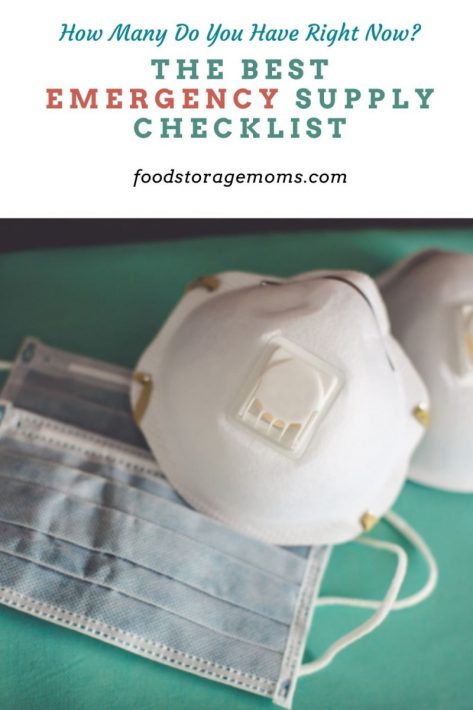
Every Emergency Inventory Should Include Food and Water
The key to surviving any emergency is to have the basic items that keep us alive every day. That would certainly include food and water. Maintaining the energy you need to perform any tasks at hand requires you to stay sufficiently fed.
It doesn’t have to be anything extravagant, just so it provides the nutrients and protein to sustain your daily activities.
We can actually go without food for a longer period than water. Water and proper hydration are critical to survival in any situation.
As you plan your preparedness inventory, remember that all those dehydrated foods you bring home for storage and use will need water for their consumption.
Freeze-dried foods are easier to eat without water being added, but if you want your body to function as needed, all your bodily systems will need water.
A First Aid Kit Will Help You Face Emergencies with Confidence
Hopefully, your family will face an emergency that doesn’t necessarily pose significant bodily harm. If it is a major disaster, there could be times you’ll need to transport a family member to professionals for treatment, if you can safely get there.
In most cases, having a fully stocked first aid kit will be sufficient to deal with cuts, burns, scratches, and maybe even a broken bone until the event passes on and you can get help if needed.
It is also important to have sufficient training so you know when first aid is needed and how best to administer it.
- First Aid Kits-What You Need To Survive
- What’s In Your First Aid Kit?
- Uncommon First Aid Items We Should All Have
Light and Power Sources Keep You Safer and more Informed
I recently wrote a post about how to best deal with a power outage. Often during an emergency, thousands of homes lose power. It’s important to be able to see and get around.
If your flashlights need batteries, have extra, just in case. I like solar flashlights and lanterns so I don’t have to worry if my batteries are fresh.
If you have a backup power source, whether it’s a generator or solar power unit, you can run radios, TVs, CPAP, and other things that will make your home more functional and safe.
Another item to help you stay informed is a hand-crank radio. I bought one of these that also is a weather radio. I have a peaceful feeling every time I see this radio on the shelf since I know I can “crank” it up and listen to the weather and other news reports.
Everyone likes knowing what’s going on outside their home, in the neighborhood, and throughout the area. Many radios come equipped with lights and USB ports too.
I don’t usually suggest people rely on candles during an emergency due to the possible fire danger. I’ve recently learned that if you put your candles in a thick mason jar or on a wide-based plate, as long as you keep them away from flammable things like curtains, you should be ok.
They also put out a little warmth for your hands and feet, if needed.
I’ve also heard that some people swear by their use of glow sticks. They feel the glow sticks have proven to be long-lasting, and they appreciate that they are battery-free and safer than candles.
You May Need to Make Noise to Get People’s Attention
During an emergency how quickly you respond to the situation could be critical to survival. Having a whistle or horn to wake up family members in a timely fashion could make a real difference.
Also, you may need to alert others outside your home that you are inside and need help. There could be a situation in which you are trying to find a family member or neighbor and using a whistle or horn would prompt them to yell out in response. I have several sets of these, Emergency Whistles
Having Various Types of Gloves Could Prove Helpful
Emergency situations can take lots of forms. Your house could be flooded and you’ll need to bail out the water and shovel the mud. Picture how your hands will feel after that effort if you didn’t wear quality work gloves.
You could also face a terrific snowstorm and need to clear your driveway, porch, or roof. Without warm winter gloves, those tasks would not only be miserable but also unsafe as frostbite could set in.
Another handy item to have in your supply is hand warmers. Again, it is important to protect your hands and fingers from damage caused by cold.
Have Supplies that Provide Some Sanitation Coverage
Over the past couple of years, we’ve all learned the value of wet wipes and hand sanitizer. Early on, there was a shortage of these things as hordes of people charged to Costco and other stores to get products that provided some protection.
Besides keeping various parts of our body cleaner, wet wipes can be used to clean countertops, sinks, and other areas of our bathroom and kitchen.
If the water is shut off, we still need to keep our hands as clean as possible. Hand sanitizer has been shown to be effective when used consistently and often. You may want to add adult diapers or adult disposable underwear to your stash, someone in your family may need it. Why You Should Make Your Own Hand Sanitizer + DIY Recipe
Tissues Are for More Than Blowing Your Nose
We are all used to reaching for a soft tissue when we feel a cough or sneeze coming. They have been everyone’s favorites for years.
Sometimes we forget that they can also be used to wipe up small spills, used like gauze to stop bleeding, wadded up in a small ball to stuff in our ears when they ache or we need to dampen sound, and much more.
It’s great that they come in box form which makes them easy to stack and store. The box also helps to keep them more sanitary, even after they’ve been opened.
Who Doesn’t Love Duct Tape?
One of our daughters had a father-in-law who swore by duct tape. He used it to fix so many broken or damaged items.
Our family has always had duct tape around the house, but we haven’t become that attached. It is a handy tool to fix various things around the house for a temporary period, but I wouldn’t use it as a “permanent” solution. Duct Tape Duct Tape: Why You Need to Store It
Extra Blankets are a Must-Have Supply Item
We’ve found having extra blankets available to be a wise decision in many situations. They not only help keep you warm when the weather turns cold each year, but they can be used to cover windows, act as insulation under doorways, help raise your feet and legs if they get injured, help support your neck or back, and much more.
Some people have found that emergency blankets with their heat-reflecting foil are a Godsend. You’ve seen these on the news being put to use in shelters. I don’t own any, but I need to check them out. I have these, Swiss Safe Emergency Mylar Thermal Blankets
Masks of all Types are Must-Haves
The wearing of masks in both indoor and outdoor environments has become commonplace. They can certainly help contain the spread of diseases. During an emergency, we face the additional concern of dust and smoke in the air.
Not all masks help in these situations, particularly with the smoke. Do your research, but my feeling is we should all have an inventory of N95 masks which seem to be the most efficient at a reasonable cost.
Having the Right Tools Available is Critical
Mark has had a large tool chest in the garage for years. It’s his go-to support item due to the inventory of screwdrivers, pliers, hammers, drills, bits, etc. In an emergency, a functional item called a multi-tool would sure be a handy thing to have.
Good ones are almost like having a well-stocked toolbox all in one. They are so small you can put them in with your other supply items and not feel guilty about taking up space.
You may also want to have an all-purpose bag close by. It could be like a duffle bag, gym bag, diaper bag, or another style as long as it has strong handles and is able to carry a fair amount of weight.
You can use the bag to carry most, if not all, of the items we’ve discussed today. Store it where it will be handy to grab and go if you need to evacuate in a big hurry.
Final Word
I’ve tried to be of help by discussing the best preparedness supply checklist for you. We all can use some help to get organized, but having the right supply of needed items when an emergency comes up is particularly important.
You may have other items you feel should be included, so please share those with my readers in the comments below. We all can help assist others as we work together to make the world a safe and well-prepared place. May God bless this world. Linda
Copyright Images: N95 Masks Depositphotos_362371406_S

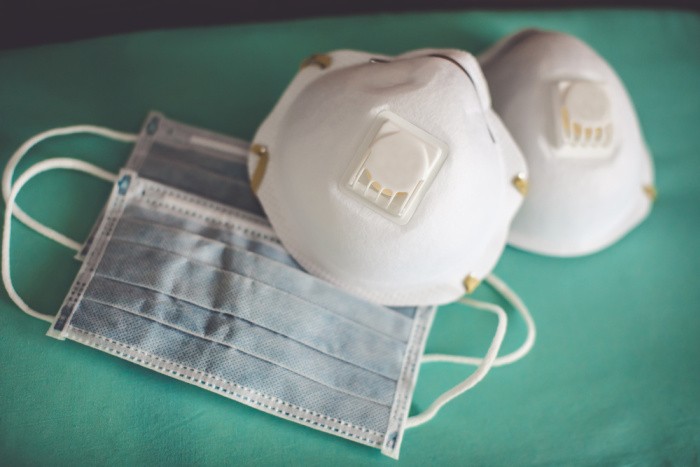

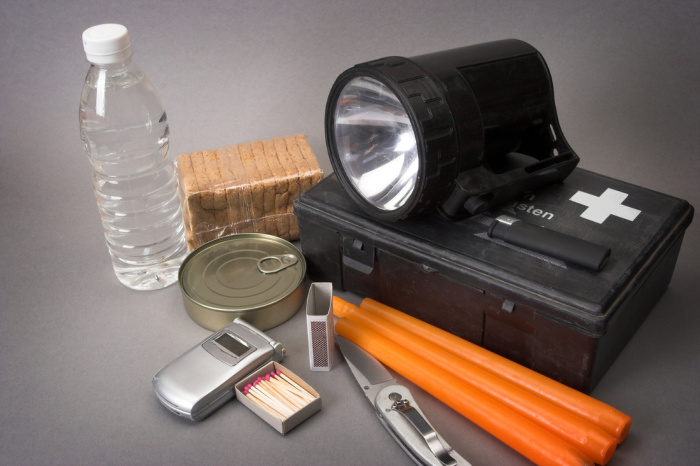
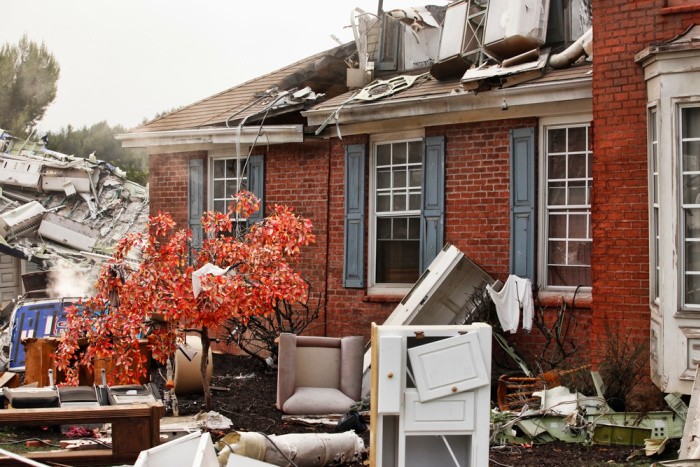
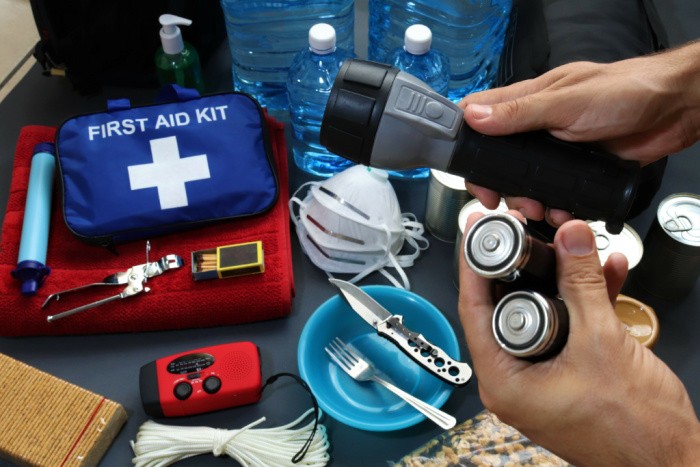
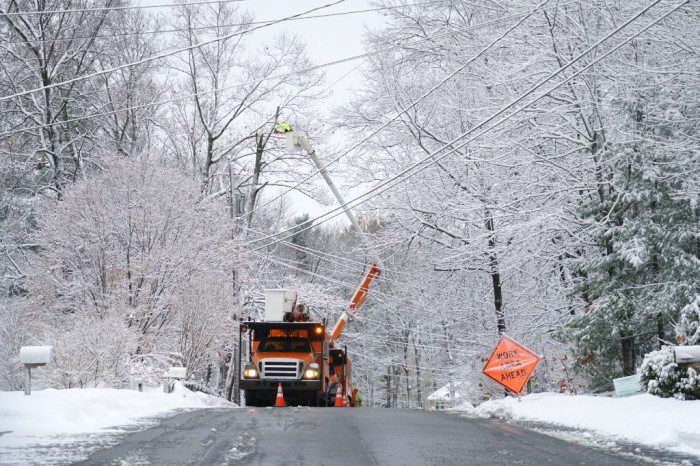

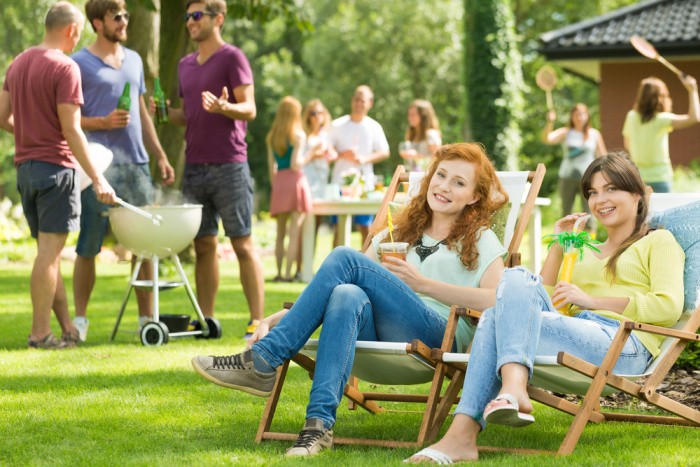







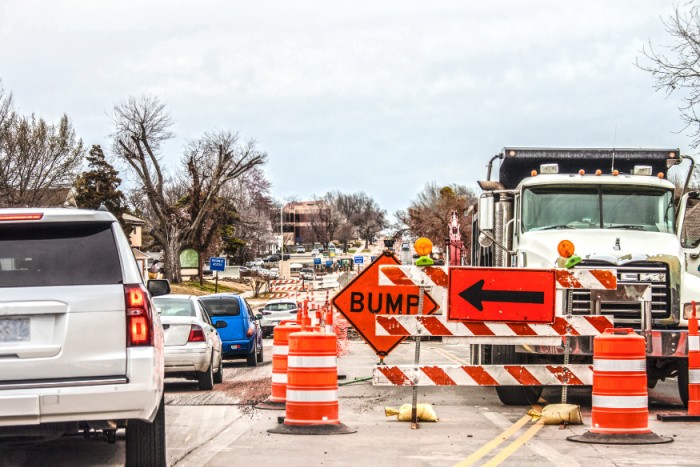
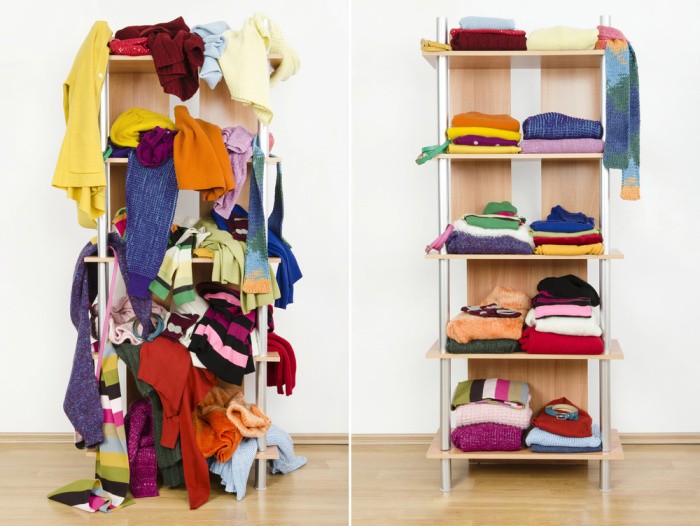

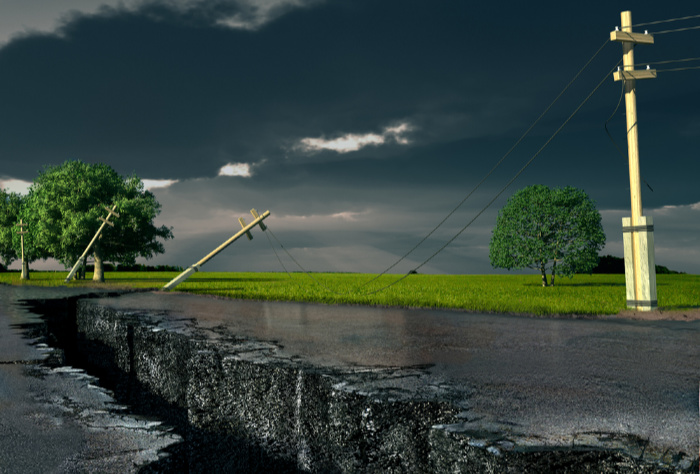



As usual very good and helpful information. When I read preparedness lists sometimes a light comes
on in my head about another item that would be of great benefit.
As we age bladder and bowel incontinence can become a problem.We hate to think or talk about it.
We have found that adult diapers can be found at Thrift Stores.It seems that when their loved ones
pass away many people donate all sorts of medical supplies.
Hi Chuck, thank you for your kind words. Sometimes we have to see things over and over before that “light” turns on. I totally agree. I think I will add the adult diapers to the list. It’s a great reminder. Great comment, Linda
Great list as usual, Linda. We do have a couple of walkers, and a wheelchair that were our Moms. At our age, you never know what you’ll need. We do have a couple of bath chairs, too. I’d love to have a ramp to our front door. Our doors are not handicapped friendly. They are too narrow. We do have most, but not all of this list. Gotta put the ones we don’t have on the list.
Linda, I just got a Surgical Instrument Kit for minor surgery, plus a couple of scalpels, some suture needles and thread and a stapler and staple remover. The stapler is for Vet use, but it can be used on people. Now, I just need to be able to use them if needed.
Hi Deborah, great comment! I love hearing you have walkers and a wheelchair. You may never need them but a family member or neighbor may at some time. I love hearing you got a Surgical Instrument Kit. I LOVE LOVE LOVE hearing this! Start watching YouTube videos on how to use them. Mark and I learned how to do stitches when a doctor came and showed us how to do them. Underneath and top stitches. My hands do not work like they use to do to arthritis but one way or another I could so stitches if I had to. Linda
Linda, I have the stapler, for if I can’t stitch up a wound. I have books I’m prepper medicine and herbal remedies. Can’t have enough information on how to deal with illnesses and accidents. Just my opinion. LOL I’m just hoping I’ll be able to do it if the need arrives.
Hi Deborah, I think our adrenal will kick in and we can do almost anything. Praying I’m right! LOL! Linda
I’m praying you’re right, too. I don’t do needles well.
Hi Deborah, I don’t do needles well, either. Fingers crossed! Linda
At one time I had give myself allergy shots in my stomach. It was fine until I drew back blood. Then I couldn’t do it anymore. I don’t look when I get a shot.
Hi Deborah, I can’t look either!! LOL! Oh my gosh! Linda
Practice it.
Had 45 seconds this morning around 0500 to grab and get to the tornado shelter.
All good. Hit 1/2 mile away.
List will help you get through the OODA
Even the military uses list and written load out plans
Glad you and yours are ok.
Hi Janet, I know, right?? Linda
Thx
Hi Matt, OH MY GOSH! I’m glad you and your family are okay!! 1/2 a mile away is close!!!! I had to Google OODA! LOL! “The OODA loop is the cycle observes–orient–decide–act, developed by military strategist and the United States Air Force Colonel John Boyd.” I learn something new every day! Linda
Great list. I noticed when I went to Walmart this morning that the milk shelves were empty and there were signs asking people to limit 2 containers of milk. I’m glad I didn’t need any and that’s why I keep powdered milk at home. I wanted to take a picture but there were too many sets of eyes on me so I didn’t. Many other shelves were empty there however the canned vegetable aisle was well stocked. At any rate, we need to buy what we need when we find it (if we can afford it).
Hi Paula, oh thanks for the update, we all love to hear what’s going on in other stores. I heard eggs are in short supply, even people who are selling them have raised the price to $10.00 a dozen (per a reader). I wonder how people will feed their families, with the prices we are seeing. Linda
Interesting info about the milk! I’ve had several friends/relatives in different states saying they cannot find evaporated milk.
Hi Amy, wow, evaporated milk, interesting! I will have to check! Linda
Such a thought provoking article! And a great reminder as well to look ahead. As I read about Mark’s tool chests, I thought about the need to have Manual tools. I just found a few saws that had been in my falling down greenhouse. They are rusted and I seriously thought about throwing them away. Now I think I will clean them up, sharpen as well as I can (I have a lot of sharpeners, lol). I gave my gas chainsaw to my ex this summer as it was too hard for me to use. He came back with a small lightweight electric chainsaw for me. But…this last summer I hired young teens to do trimming/cutting down small trees growing next to my house. I didn’t feel comfy having them run Any chainsaw. I was only able to find 2 hacksaws! Well, we found my other saws, After we needed them. After your article, I was reminded that Manual tools are dang handy, so I’m keeping those old saws. Giggle, and this is a woman who has a manual hand-turned drill with all the original bits, small to incredibly large. My dad used it to build his first house when he was 16, back in the 30’s. His brother gave it to him after using it to build his first house in the 1920’s. Oh, and I still use it from time to time. Yet, I was thinking about throwing out my manual saws?!? Thank you, thank you for this article as a reminder. You are just great!
Hi Wendy, oh my gosh, those are a treasure from your dad via your uncle. WOW!! Yeah, keep those manual saws! We hire out stuff as well. Mark and I decided it’s not safe for us to use a chainsaw or climb tall ladders to clean out gutters anymore. LOL! Life is so good! Linda
You want to be careful using things like tissues or toilet paper for wound care. The have a tendency to fall apart when wet. This could lead to lots of pesky bits and pieces in the wound leading to many possible sources for infection. It would be better to use a clean cloth or real sterile gauze backed with expedient absorption materials if necessary.
Hi KyKPH, thanks for the reminder. I have a lot of sterile gauze for this very reason, a great tip! Linda